#northern lithuania
Text

"The Hill Of crosses / Kryžių" in Northern Lithuania.
#crosses#macabre#dark#graveyard#lithuania#northern lithuania#black metal#orthodox#orthodox christianity#cemetery#graves#gravestones#eastern europe#baltic sea
16K notes
·
View notes
Text
Is snowing in Kaunas ❄️❄️❄️
My home city Kaunas, Lithuania 🇱🇹

#my country#lithuania#kaunas#baltic countries#baltic states#northern europe#north europe#europe#snow#snowing#lithuanian hetalian#hetalian
30 notes
·
View notes
Text

#northern crusades#art#livonia#livonian#livonian brothers of the sword#latvia#lithuania#estonia#history#europe#european#christianity#crusades#crusaders#northern europe#medieval#middle ages#knights#armour#ambush#livonian order#riga#samogitia#vilius petrauskas
308 notes
·
View notes
Text
Quote: "We had a meeting with the commander of the Lithuanian State Border Guard Service, and together with our team we discussed not only closing the border with Belarus, but also other options, including closing the border with Russia, as there may be various threats, and we must be ready."(..)
P.S. Very good point: Russians use open borders for people smuggling, infiltration of Russian spies and Islamist terrorists, and Russian and Western businessmen who do business with the Kremlin help finance war and hostile activities against the West. A total CLOSING of the border is really necessary…
The best option would be if Poland, Latvia, Estonia, Finland and Norway also completely closed their borders with war criminal countries...
#Lithuania#russian threat#human trafficking#russian invasion#border#Northern Europe#Baltic States#Poland
7 notes
·
View notes
Text
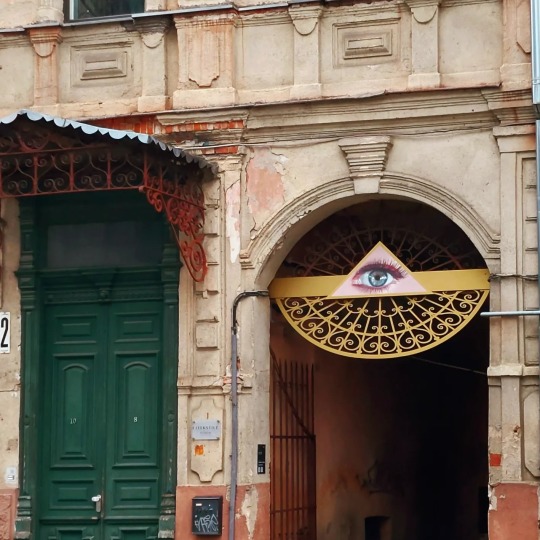
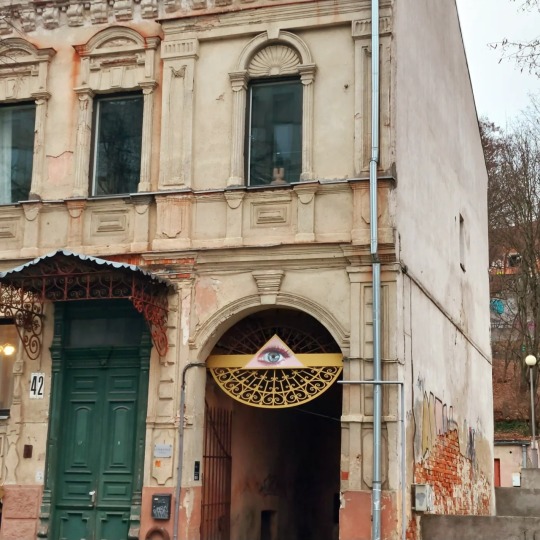
07.02.2023 °•. Kaunas, Lithuania
IG: hel.viti
#erlingsdottir#travel#photography#cities#old cities#architecture#kaunas#Lithuania#northern europe#illuminati#esoteric#occult
18 notes
·
View notes
Text

A detailed map of the Grand Duchy of Lithuania in 1614 by Mikalojus Kristupas Radvila Našlaitėlis (Mikołaj Krzysztof Radziwiłł the Orphan). The map is considered to be one of the best cartographic works of the Renaissance. It is currently kept in the Uppsala University Library.
3 notes
·
View notes
Text
Heta Pride 2022 Day 3
Mspec (Bi, pan, etc.) Headcanons
Bi
England
America (Biromantic)
Canada
Italy
Romano
Japan (Biromantic)
Prussia
Ukraine
Northern Ireland
Pan
France
Spain
Hungary
Other/Prefers not to label (but is attracted to multiple genders)
China
Lithuania
Scotland
Wales
#hetalia#hws#hetapride2022#hws england#hws america#hws canada#hws italy#hws south italy#hws romano#hws lithuania#hws japan#hws prussia#hws ukraine#hws northern ireland#hws france#hws spain#hws hungary#hws china#hws scotland#hws wales
19 notes
·
View notes
Text

Same-sex marriage in 2003 vs. 2013 vs. 2023
(20 years of change)
More info below:
----
2003:
Marriage : Netherlands, Belgium, British Columbia (CA), Ontario (CA)
Civil unions : France (including overseas territories), Germany, Denmark, Iceland, Sweden, Norway, Finland, Greenland, Rio Negro (AR), Ciudad de Buenos Aires (AR), California (US), New York (US), Hawaii (US), Vermont (US), Canary Islands (ES), Aragon (ES), Catalonia (ES), Andalusia (ES), Extremadura (ES), Castilla-La Mancha (ES), Castilla-Leon (ES), Madrid (ES), Valencia (ES), Asturias (ES), Basque Country (ES), Navarre (ES), Balearics (ES), Quebec (CA), Alberta (CA), Manitoba (CA), Nova Scotia (CA), Geneva (CH), Zurich (CH), Portugal.
----
2013:
Marriage : Netherlands, Belgium, Canada, Brazil, Uruguay, Argentina, South Africa, Spain, Portugal, France (including overseas territories), Denmark, Norway, Sweden, Iceland, New Zealand, Washington (US), California (US), New Mexico (US), Minnesota (US), Iowa (US), Maryland (US), DC (US), New Jersey (US), Delaware (US), New York (US), Connecticut (US), Rhode Island (US), Vermont (US), Massachusetts (US), New Hampshire (US), Maine (US), Hawaii (US), Mexico City (MX), Quintana Roo (MX).
Civil unions : Greenland, Colombia, Ecuador, Merida (VZ), United Kingdom, Ireland, Germany, Czech Republic, Austria, Finland, Hungary, Slovenia, Croatia, Switzerland, Luxembourg, Liechtenstein, Australia
Recognizes marriages performed abroad : All 32 Mexican states and Israel
----
2023:
Marriage : Netherlands (including overseas territories), Belgium, United States, Canada, Mexico, Costa Rica, Cuba, Puerto Rico, Colombia, US Virgin Islands, Ecuador, Brazil, Argentina, Uruguay, Chile, Malvinas/Falklands, France (including overseas territories), Spain, Portugal, Andorra, Germany, Slovenia, Switzerland, Austria, Malta, Guernsey, Jersey, United Kingdom, Isle of Man, Ireland, Gibraltar, Norway, Denmark, Sweden, Finland, Iceland, Greenland, Luxembourg, Faroe Islands, South Africa, Australia, New Zealand, Taiwan, Northern Mariana Islands, Guam, St. Helena, Pitcairn Islands, Gibraltar.
Civil unions : Bolivia, Italy, Cayman Islands, Bermuda, Aruba, Curaçao, Czech Republic, Hungary, Croatia, Montenegro, Greece, Cyprus, Estonia, Liechtenstein
Recognizes marriages performed abroad : Namibia, Israel, Nepal, American Samoa
----
Future :
Same-sex marriage is under consideration by the legislature or the courts in Aruba, Curaçao, the Czech Republic, Estonia, Greece, India, Japan, Liechtenstein, Namibia, the Navajo Nation, Nepal, Thailand, and Venezuela, and all countries bound by the Inter-American Court of Human Rights (IACHR), which includes Barbados, Bolivia, Dominican Republic, El Salvador, Guatemala, Haiti, Honduras, Nicaragua, Panama, Paraguay, Peru, and Suriname.
Civil unions are being considered in a number of countries, including Lithuania, Peru, the Philippines, South Korea, Ukraine, China, Hong Kong, Japan, Latvia, Panama, Romania, Serbia, Slovakia, Thailand, and Venezuela.
----
#map#maps#cartography#usa#latin america#mexico#data#americas#geography#europe#gay#lgbt#gay marriage#lgbtq#lgbtq history#lgbt history#history#lesbian#sapphic#marriage#pride
7K notes
·
View notes
Text
" Look at the birds of the air, that they do not sow, nor reap, nor gather in to barns and yet your heavenly Father feed them. Are you not worth much more than they? "
~ Mathew 6:26,Bible
Last days of northern hawk owl and the song for all Bobs.
# deko-photo4
# hawkowl
# hawkowlofinstagram
# peleda # surnianlula
# hiiripollo
# sowajarzebata
# owlstagram
# owlmagic # owlwisdom
# featheredfriends
# owlphotography
# wildlifephotography
# owllovers #owllife
# natgeowild
# owloftheday
# lithuaniawildlife
# lithuania
# reelsinstagram
# @owl. fanatics
# songforbobs
# warrenellis
15S23
338 notes
·
View notes
Text
I have been wondering about the demographics of who is voting in these polls 👀
551 notes
·
View notes
Text
When you think of Eastern European Jewish cuisine, which words come to mind? Light? Healthy? Plant based? Probably not. Heavy, homey and meat-centric are more like it.
Fania Lewando died during the Holocaust, but had she been given the full length of her years, Ashkenazi Jewish cuisine may have taken a turn to the vegetarian side and we might all be eating vegetarian kishke and spinach cutlets in place of brisket.
Lewando is not a household name. In fact, she would have been lost to history had it not been for an unlikely turn of events. Thanks to a serendipitous find, her 1937 work, “The Vilna Vegetarian Cookbook” (“Vegetarish-Dietisher Kokhbukh”in Yiddish), was saved from oblivion and introduced to the 21st century.
Vilna in the 1930s, where Lewando and her husband Lazar made their home, was a cosmopolitan city with a large Jewish population. Today, it is the capital of Lithuania but it was then part of Poland. Lewando opened a vegetarian eatery called The Vegetarian Dietetic Restaurant on the edge of the city’s Jewish quarter. It was a popular spot among both Jews and non-Jews, as well as luminaries of the Yiddish-speaking world. (Even renowned artist Marc Chagall signed the restaurant’s guest book.)
Lewando was a staunch believer in the health benefits of vegetarianism and devoted her professional life to promoting these beliefs. She wrote: “It has long been established by the highest medical authorities that food made from fruit and vegetables is far healthier and more suitable for the human organism than food made from meat.” Plus, she wrote, vegetarianism satisfies the Jewish precept of not killing living creatures.
We know little about her life other than she was born Fania Fiszlewicz in the late 1880s to a Jewish family in northern Poland. She married Lazar Lewando, an egg merchant from what is today Belarus and they eventually made their way to Vilna. They did not have children.
Lewando, to quote Jeffrey Yoskowitz, author of “The Gefilte Manifesto” was “a woman who challenged convention;” a successful entrepreneur, which was a rarity among women of the time. She supervised a kosher vegetarian kitchen on an ocean liner that traveled between Poland and the United States, and gave classes on nutrition to Jewish women in her culinary school.
“The Vilna Vegetarian Cookbook” was sold in Europe and the U.S. in Lewando’s day, but most of the copies were lost or destroyed during the Second World War. In 1995, a couple found a copy of the cookbook at a second-hand book fair in England. They understood the importance of a pre-war, Yiddish-language, vegetarian cookbook written by a woman, so purchased it and sent it to the YIVO Institute’s offices in New York. There, it joined the millions of books, periodicals and photos in YIVO’s archives.
It was discovered again by two women who visited YIVO and were captivated by the book’s contents and colorful artwork. They had it translated from Yiddish to English so it could be enjoyed by a wider audience.
Like many Ashkenazi cooks, salt was Lewando’s spice, butter her flavor and dill her herb. The book is filled with dishes you’d expect: kugels and blintzes and latkes; borscht and many ways to use cabbage. There’s imitation gefilte fish and kishke made from vegetables, breadcrumbs, eggs and butter. Her cholent (a slow-cooked Sabbath stew) recipes are meat-free, including one made with prune, apple, potatoes and butter that is a cross between a stew and a tzimmes.
There are also some surprises.
Did you know it was possible to access tomatoes, eggplants, asparagus, lemons, cranberries, olive oil, Jerusalem artichokes, blueberries and candied orange peel in pre-war Vilna? There’s a French influence, too, such as recipes for mayonnaise Provencal and iles flottante, a meringue-based dessert, and a salad of marinated cornichons with marinated mushrooms.
“It’s hard to know who the target audience was for this cookbook,” said Eve Jochnowitz, its English-language translator. “We know from contemporary memoirs that people in Vilna did not have access to these amazing amounts of butter, cream and eggs,” she said. “Lewando was writing from a somewhat privileged and bourgeois position.” While many of these recipes may have been aspirational given the poverty of the Jews at the time, the cookbook demonstrates that it was possible to obtain these ingredients in Vilna, should one have the resources to do so.
While the cookbook is filled with expensive ingredients, there is also, said Jochnowitz, “a great attention to husbanding one’s resources. She was ahead of her time in the zero-waste movement.” Lewando admonishes her readers to waste nothing. Use the cooking water in which you cooked your vegetables for soup stock. Use the vegetables from the soup stock in other dishes. “Throw nothing out,” she writes in the cookbook’s opening essay. “Everything can be made into food.” Including the liquid from fresh vegetables; Lewando instructed her readers on the art of vitamin drinks and juices, with recipes for Vitamin-Rich Beet Juice and Vitamin-Rich Carrot Juice. “This was very heroic of her,” said Jochnowitz. “There were no juice machines! You make the juice by grating the vegetables and then squeezing the juice out by hand.”
Barbara Kirshenblatt-Gimblett, a Jewish scholar and Jewish cookbook collector, describes Lewando as “witty.” “She is showing us,” she said, “that once you eliminate meat and fish, you still have an enormous range of foods you can prepare.” Lewando is about “being creative, imaginative and innovative both with traditional dishes and with what she is introducing that is remote from the traditional repertoire.” She does that in unexpected ways. Her milchig (dairy) matzah balls, for example, have an elegance and lightness to them. She instructs the reader to make a meringue with egg whites, fold in the yolks, then combine with matzah meal, melted butter and hot water. Her sauerkraut salad includes porcini mushrooms. One of her kugels combines cauliflower, apples, sliced almonds and candied orange peel.
There is much that, through contemporary eyes, is missing in “The Vilna Vegetarian Cookbook.” The recipes do not give step-by-step instructions; rather you will find general directions. Heating instructions are vague, ranging from a “not-too-hot-oven” to a “warm oven” to a “hot oven.” Lewando assumes the reader’s familiarity with the kitchen that today’s cookbook writer would not.
Lewando and her husband were listed in the 1941 census of the Vilna Ghetto but not in the census of 1942. It is believed that they both died or were killed while attempting to escape. “She really was a visionary,” said Jochnowitz. “It is an unbearable tragedy that she did not live to see the future that she predicted and helped to bring about.”But in cooking her recipes, said Yoskowitz, as dated and incomplete as some of them may be, the conversation between then and now continues.
70 notes
·
View notes
Text
The Christmas tree in Kaunas
My home city Kaunas, Lithuania 🇱🇹
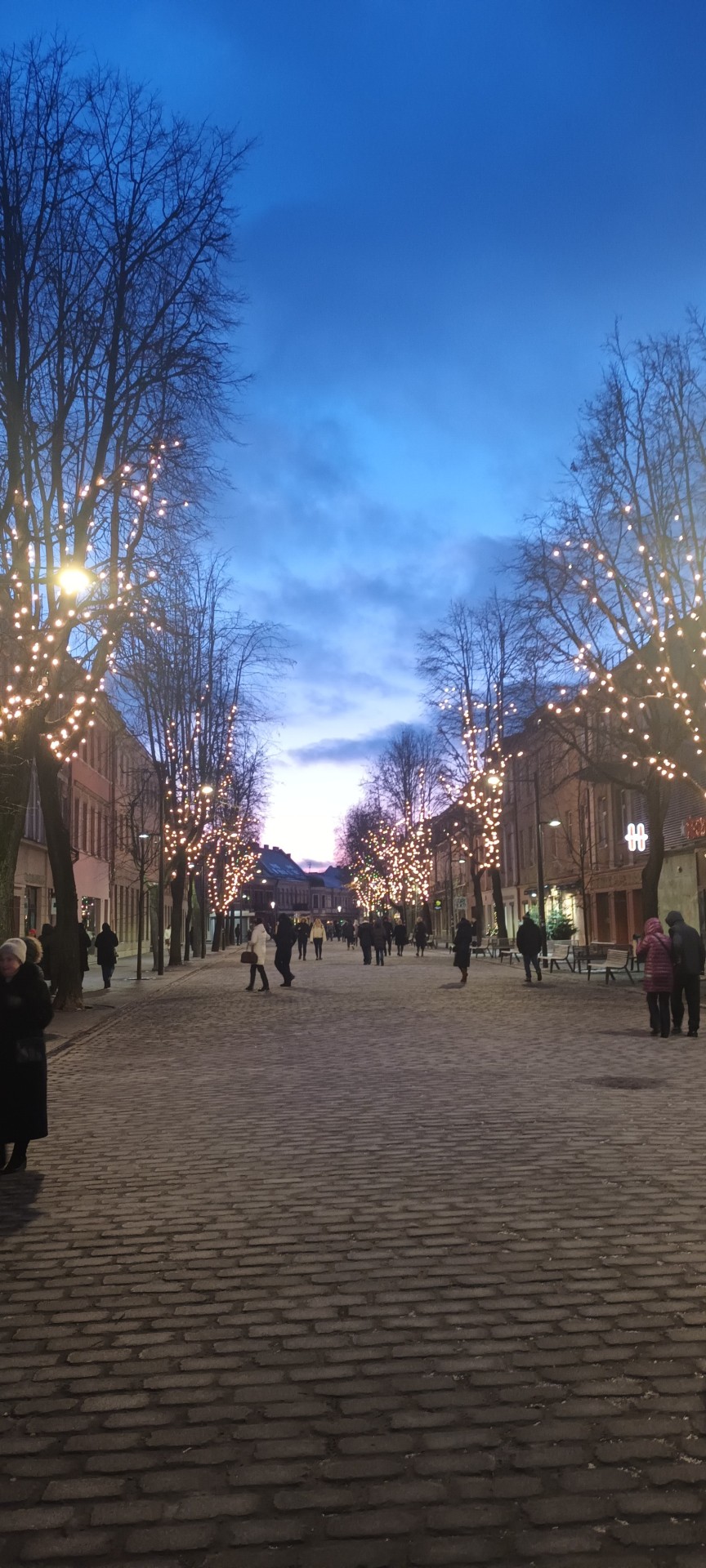

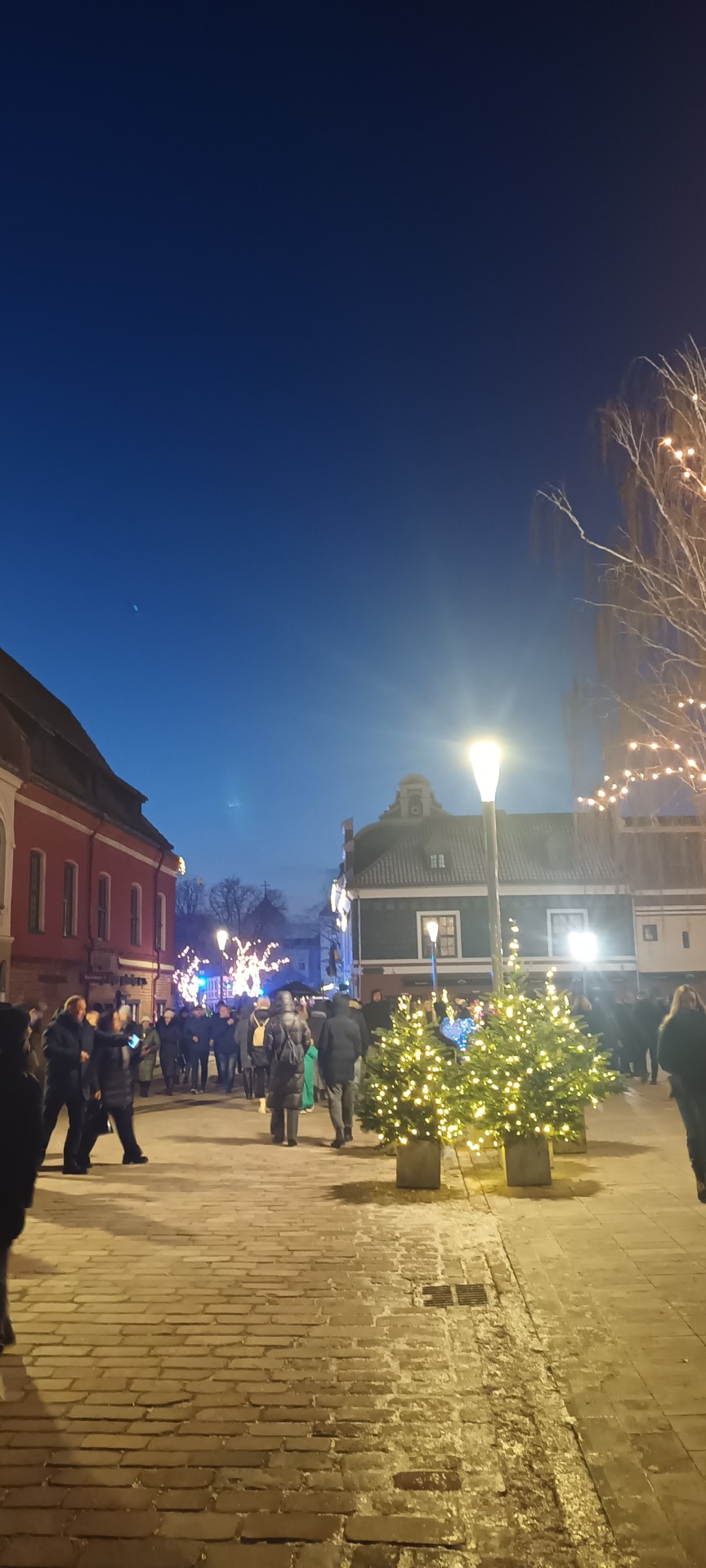







I hope you all like my home city's Christmas tree 🎄
#my home city#my city#kaunas#lithuania#northern europe#north europe#europe#baltic countries#baltic states#lithuanian hetalian#hetalian
35 notes
·
View notes
Text
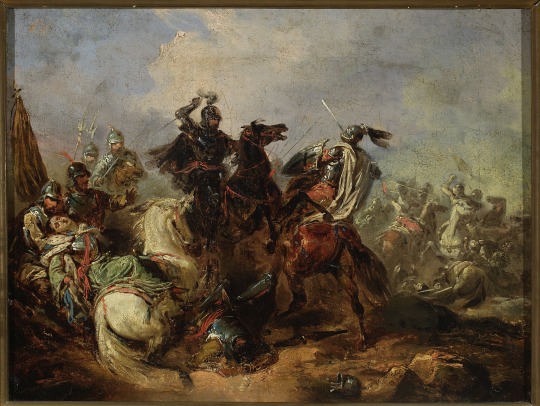
Battle of Lithuanians with the Teutonic Knights by Henryk Pillati
#teutonic knights#lithuanians#art#henryk pillati#battle#knights#knight#history#europe#european#medieval#middle ages#crusades#crusaders#northern europe#teutonic order#lithuania#crusade#war#christianity#christian#knighthood#germanic#teutonic#german#prussian#crusader
129 notes
·
View notes
Video
youtube
The Kremlin has failed in the Baltic countries. The documents showed who actually was forced to collect the belongings and go home (Кремль провалился в странах Балтии. Документы показали, кто на самом собрал манатки)
Newsader
P.S. The Kremlin has spent a fortune buying useful idiots in the Baltic states and failed miserably. The Kremlin does not know the simple truth that idiots are not good for the job, but NO SMART ONE WILL EVER SERVE MOSCOW FOR ANY MONEY...All smart people know that any word the Kremlin says is automatically a lie until there is independent corroborated evidence to the contrary...
#russian defeat#russian imperialism#russian lies#russian threat#Baltic States#Estonia#Latvia#Lithuania#Northern Europe
5 notes
·
View notes
Text
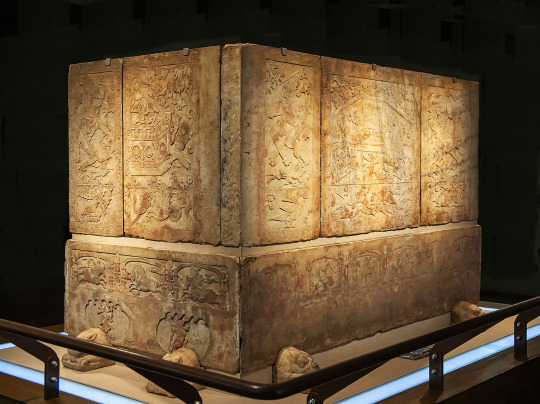

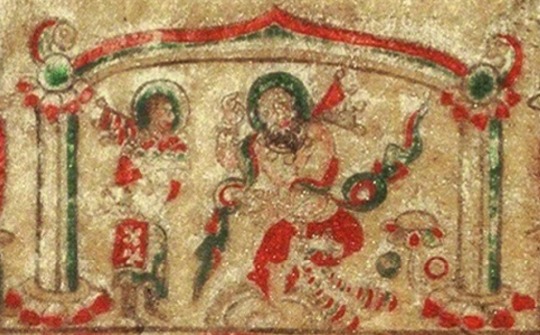

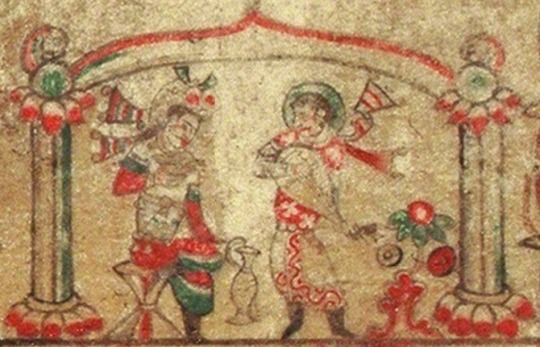




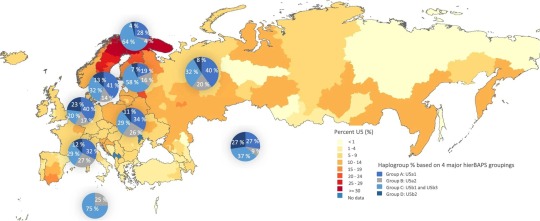
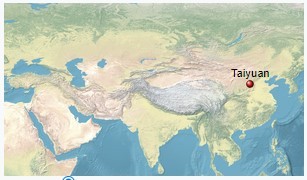
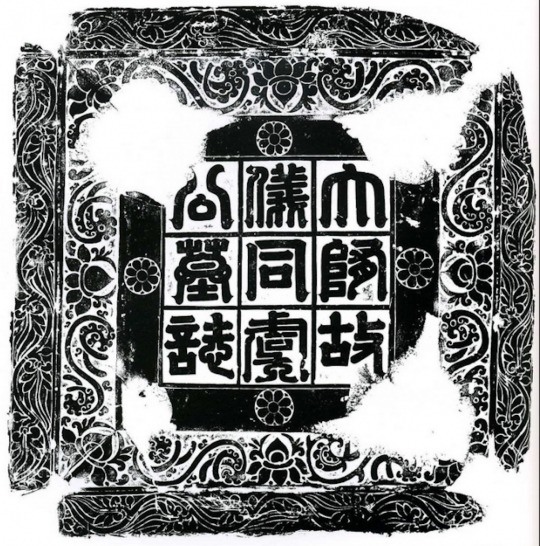
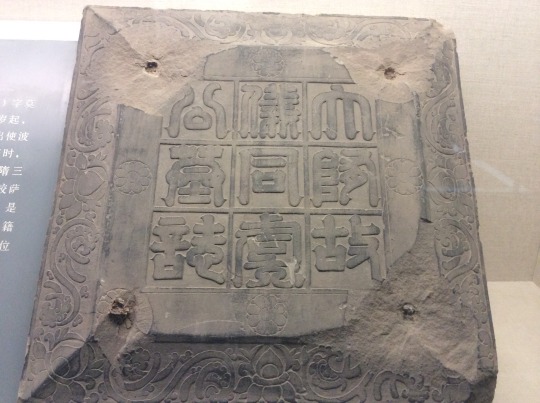

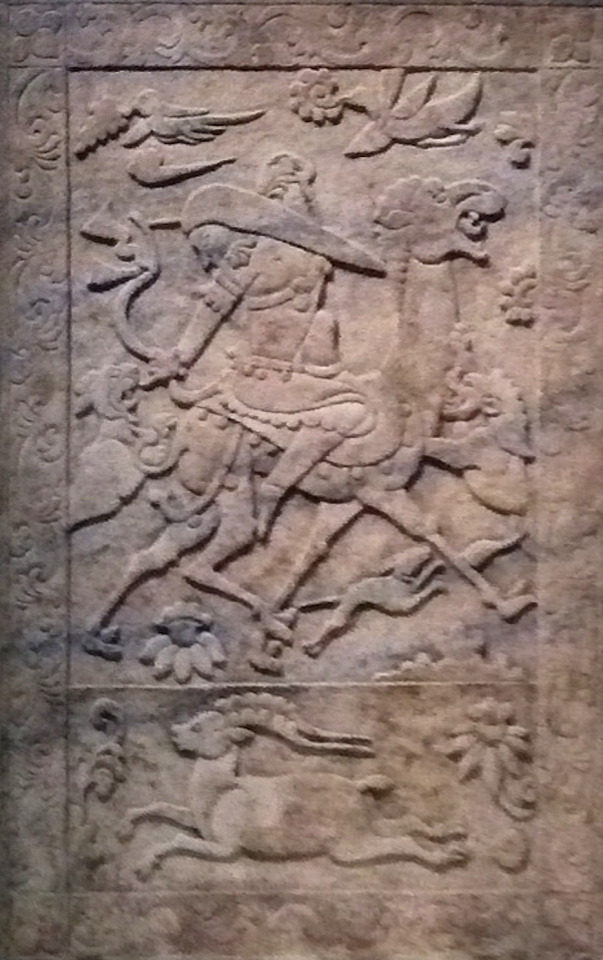
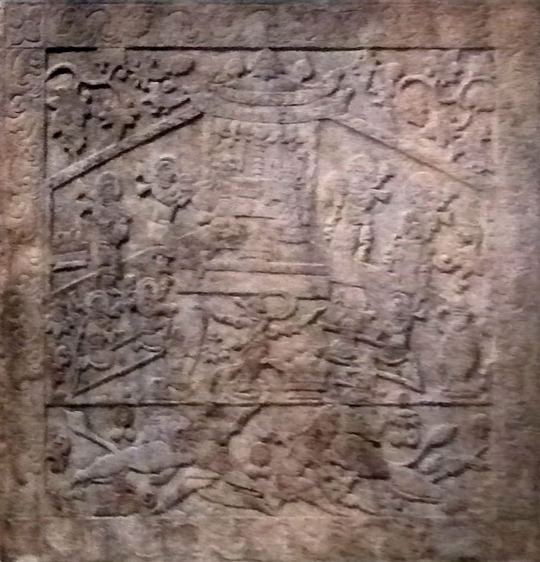
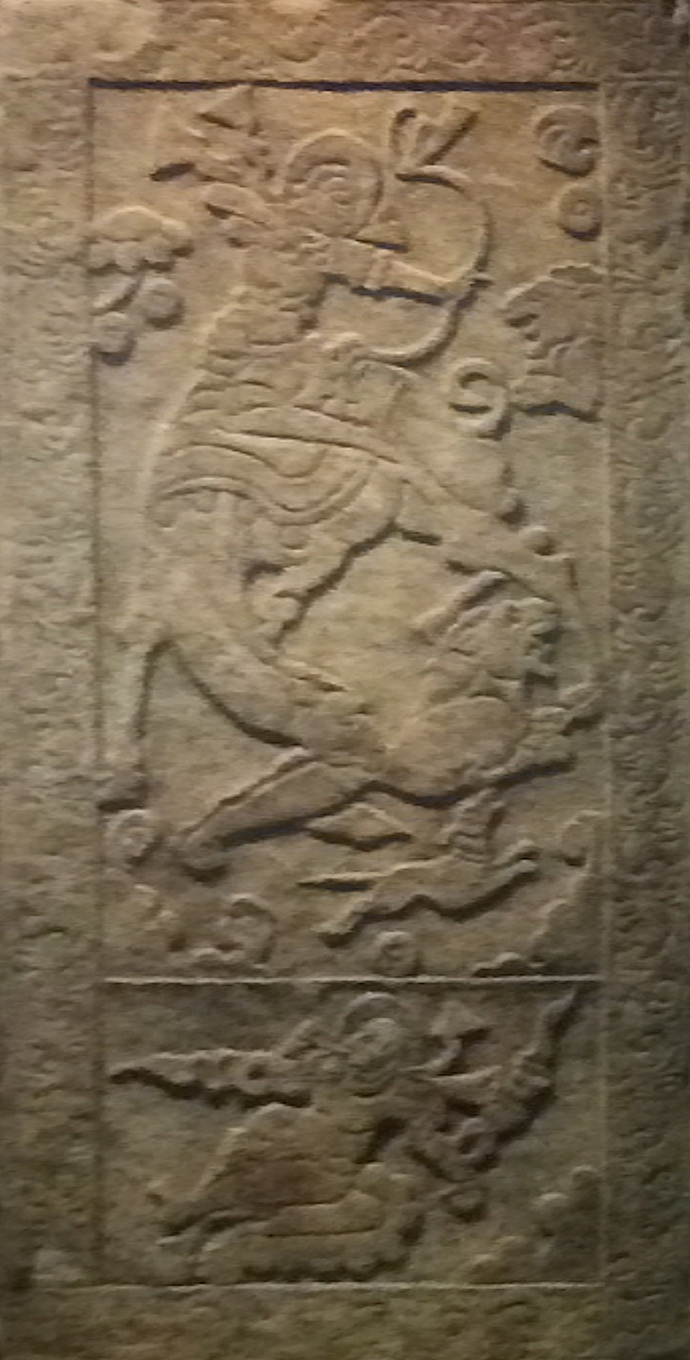
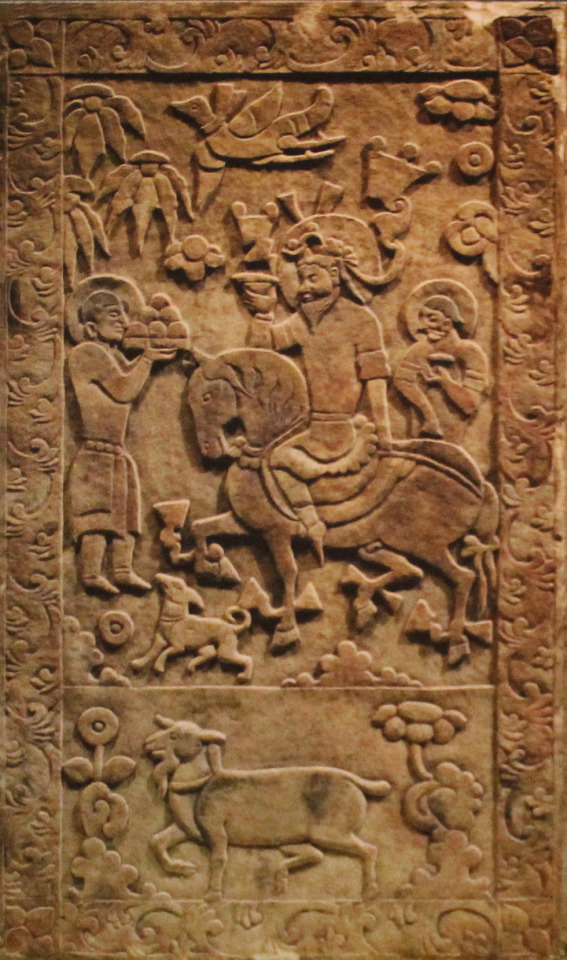
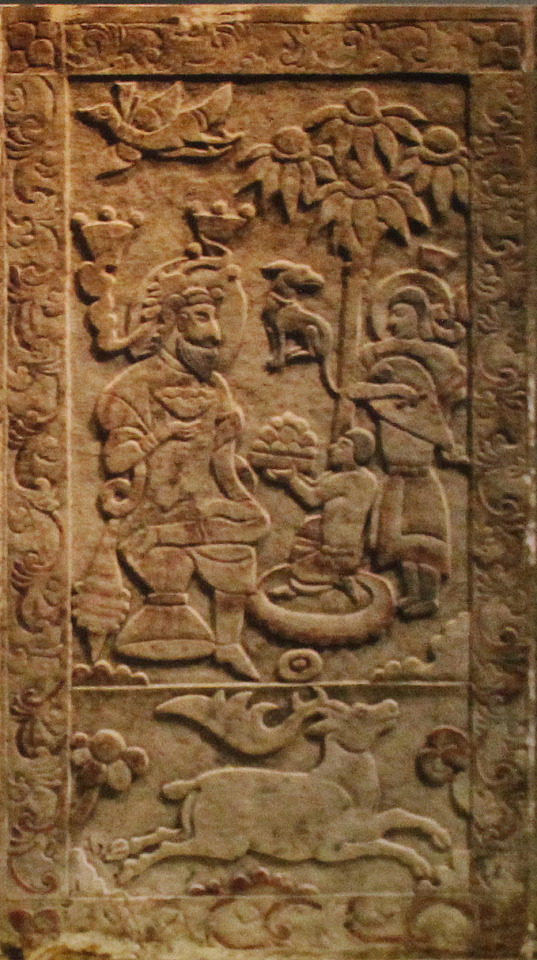
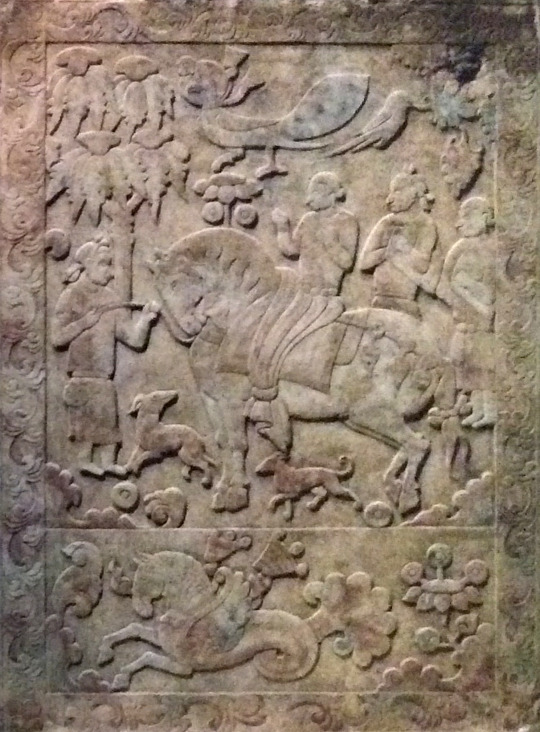
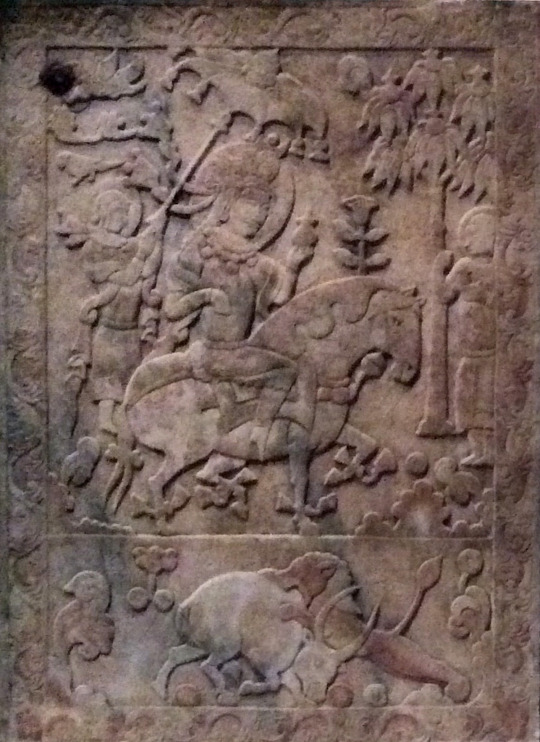
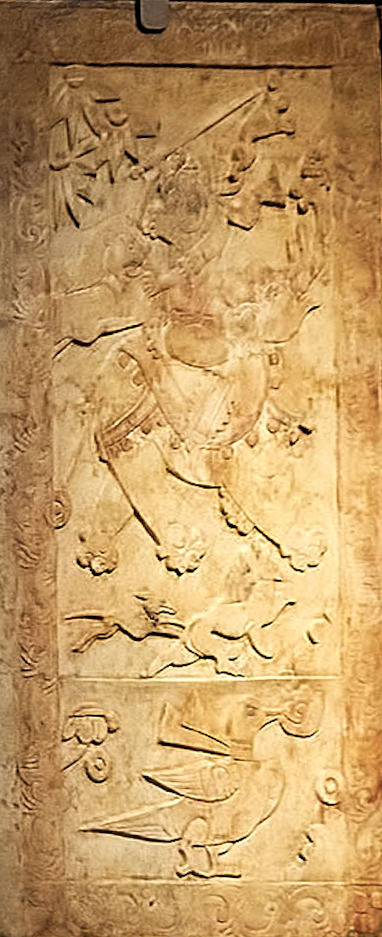
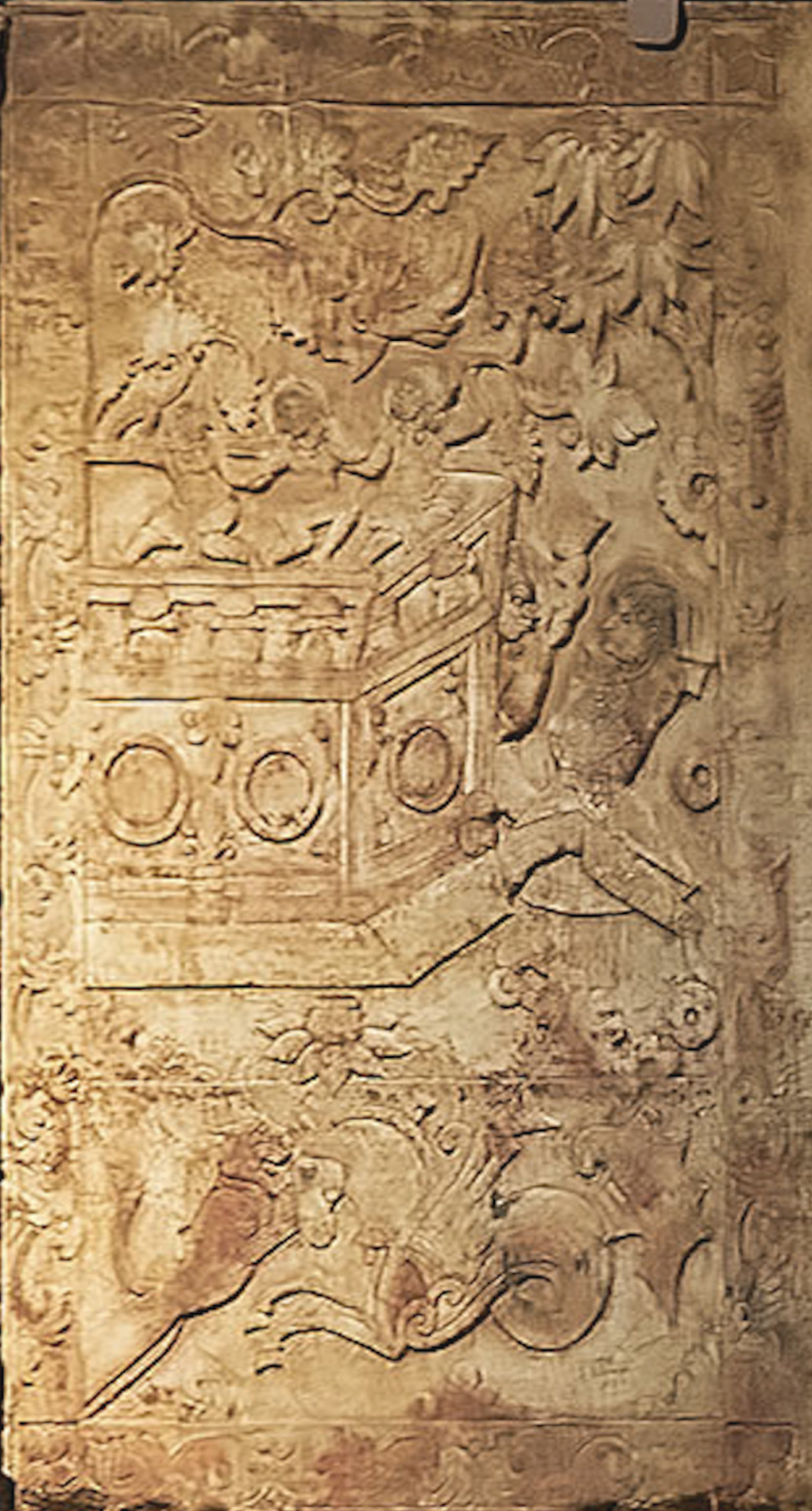

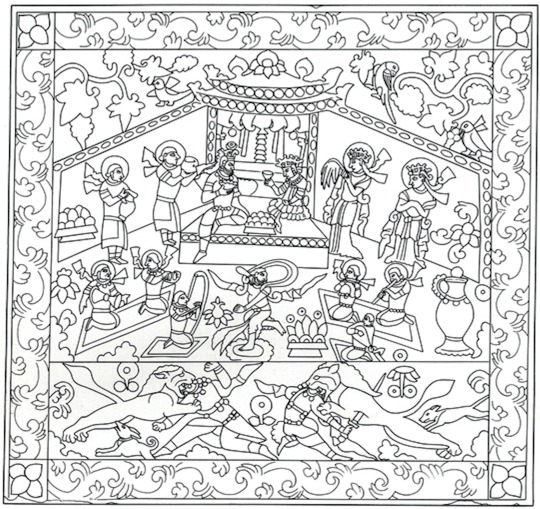
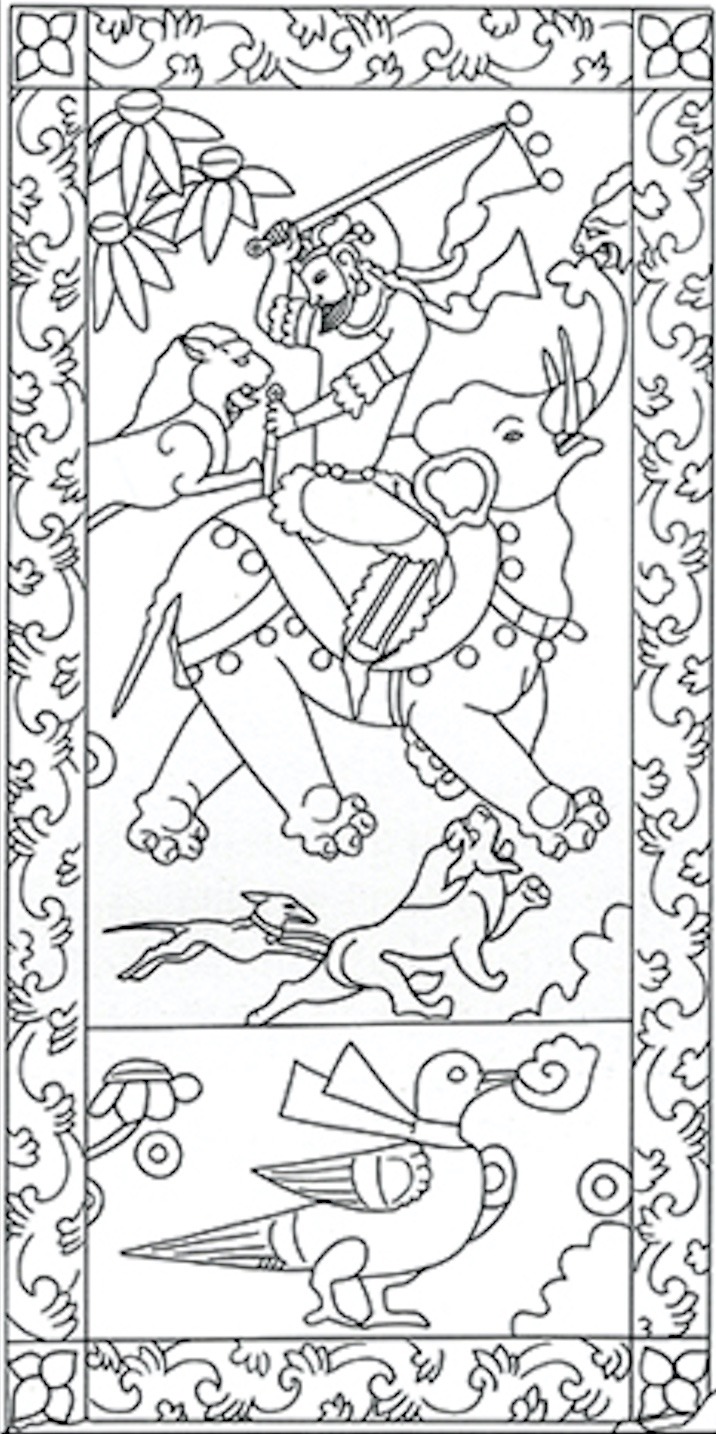
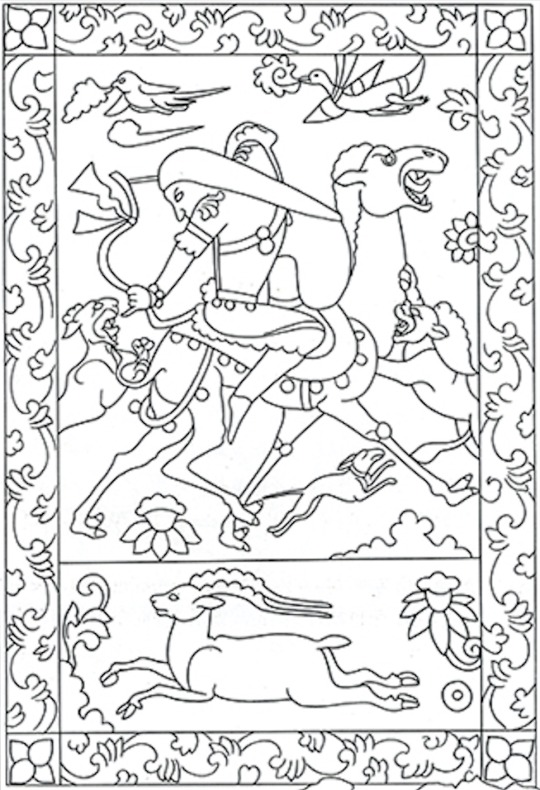



Tomb of Yu Hong 592-598 CE. Link to my blog at bottom with more sources and description of individual images.
This is probably a Sogdian tomb. Interestingly, the man has a haplogroup that was widespread amongst the blue-eyed Mesolithic/Neolithic Western Hunter Gatherers (WHG are probably where blue eyes originated from) and the haplogroup is found today most prominently in Sami, Finns, and Estonians. His wife has a haplogroup found prominently amongst East Asians. Based on her East Asian origins and the inclusion of some Turkic-looking people in the tomb's artwork I would assume she was probably a Turk, herself. The long-haired men without halos (e.g. panel 4) are probably Turks, that was a typical appearance for them during this time period. Men from other surrounding populations such as the Sogdians, Huns, Tocharians, etc. typically kept shorter hair that didn't go past their shoulders. More info:
"The man buried in the tomb went by Yu Hong (Chinese: 虞弘; pinyin: Yú Hóng; Wade–Giles: Yü Hung; 533–592 AD), with Mopan (莫潘) as his courtesy name, who was a Central Asian, probably of Persian or Sogdian origin, and practiced Zoroastrianism. He had settled in Early Middle Period China during the Northern Qi, Northern Zhou and Sui dynasties. This tomb is so far the only archaeological find in the Central Plains region that reflects Central Asian (Western Regions) culture. The epitaph found in the tomb records that he was a noble of the city of Yü-ho-lin / Yuhelin (尉紇驎) in the mysterious Yu country (魚國), assumably for which he is named, because the two characters 虞 and 魚 are homophones.
According to the epitaph, Yu Hong started his career in service of the nomadic tribe at the time, known as Ruru. At the age of 13, he was posted as an emissary to Persia by the Khagan of Ruru, as well as Parthia, Tuyuhun and Yuezhi. Later he went on a mission to the Northern Qi, Northern Zhou and Sui dynasties. He served as chien-chiao sa-pao fu / jianjiao sabao fu (檢校薩保府, lit. “acting director of the office of Zoroastrian affairs”, or “Sogdian affairs”) during the Northern Zhou period. The term sa-pao / sabao (薩保) comes from the Sogdian s′rtp′w, means a “caravan leader”.
He had later served as a provincial governor in the Sui dynasty government, a chieftain of the Central Asian people who had settled in China during that period. Yu Hong died at the age of 59 in 592 AD. His wife survived him by six years, and was buried in the same grave in 598 AD.
A study on ancient DNA reveals that Yu Hong belonged to the haplogroup U5, one of the oldest western Eurasian-specific haplogroups, while his wife can be classified as haplogroup G, the type prevalent in East Asia.
The age of U5 is estimated at between 25,000 and 35,000 years old, roughly corresponding to the Gravettian culture. Approximately 11% of Europeans (10% of European-Americans) have some variant of haplogroup U5.
U5 was the predominant mtDNA of mesolithic Western Hunter Gatherers (WHG) [this is where blue eyes probably originated from].
U5 has been found in human remains dating from the Mesolithic in England, Germany, Lithuania, Poland, Portugal, Russia, Sweden, France and Spain. Neolithic skeletons (~7,000 years old) that were excavated from the Avellaner cave in Catalonia, northeastern Spain included a specimen carrying haplogroup U5.
Haplogroup U5 and its subclades U5a and U5b today form the highest population concentrations in the far north, among Sami, Finns, and Estonians. However, it is spread widely at lower levels throughout Europe. This distribution, and the age of the haplogroup, indicate individuals belonging to this clade were part of the initial expansion tracking the retreat of ice sheets from Europe around 10,000 years ago.
U5 was the main haplogroup of mesolithic European hunter gatherers. U haplogroups were present at 83% in European hunter gatherers before influx of Middle Eastern farmer and steppe Indo-European ancestry decreased its frequency to less than 21%.
Today, haplogroup G is found at its highest frequency in indigenous populations of the lands surrounding the Sea of Okhotsk. It is an East Asian haplogroup. Haplogroup G is one of the most common mtDNA haplogroups among modern Ainu, Siberian, Mongol, Tibetan and Central and North Asian Turkic peoples people (as well as among people of the prehistoric Jōmon culture in Hokkaidō). It is also found at a lower frequency among many other populations of East Asia, Central Asia, Bangladesh, Sri Lanka, and Nepal. However, unlike other mitochondrial DNA haplogroups typical of populations of northeastern Asia, such as haplogroup A, haplogroup C, and haplogroup D, haplogroup G has not been found among indigenous peoples of the Americas."
-taken from Wikipedia
#sogdiana#indo european#ancient china#ancient history#antiquities#history#art#museums#sculpture#statue#ancient#turkic#eurasian#finnish#estonian#finno ugric#genetics
130 notes
·
View notes
Text
to all your dostoyevsky enjoyers anywhere
The relationship between literary merit and military power is not a delightful subject for contemplation. I prefer to think that I would have loved Pushkin even if Peter and Catherine the Great hadn’t waged extensive foreign and internal wars, dragging Russia into the European balance of power. But would Pushkin’s work still have been translated into English and stocked in the Barnes & Noble on Route 22 in northern New Jersey—in the world superpower to which my parents came in the seventies, in pursuit of the best scientific equipment? Even if it had been translated, and I had read it, I might not have recognized it as good. Would it have been good?
One editorial in The Spectator, responding to the proposed suspension of a Dostoyevsky lecture series in Milan, called it ironic to “censure” a writer who had himself been “sent to a Siberian labour camp for reading banned books that attacked the Tsarist regime.” As it turns out, being a victim of imperial repression doesn’t make you incapable of perpetuating repressive ideas. One of Dostoyevsky’s fellow-prisoners in Siberia, a Polish nationalist, wrote in his memoirs about Dostoyevsky’s insistence that Ukraine, Lithuania, and Poland “had forever been the property of Russia,” and would, without Russia, be mired in “dark illiteracy, barbarism, and abject poverty.”
287 notes
·
View notes